Your Trusted 24 Hours Business Service Provider !
Laird is the global authority in product design, testing, and measurement instrumentation. With advanced tools and expert engineers, Laird provides comprehensive analysis and modeling services to manufacturers worldwide.
As Laird's authorized regional distributor in Southeast Asia, Acton is committed to providing top-tier services, guaranteeing superior quality in every aspect.
Common mode Chokes
What are Common Mode Chokes?
In the transmission system, noise is classified in two ways: one is differential mode noise and the other is common mode noise. A common mode signal (noise) is an unwanted signal as it “carries” no information. A common mode choke is designed to clean common mode noise (signal) generated from either a signal line or power line circuit.
How do Common Mode Chokes Work?
Common mode chokes are used to suppress common mode noise. When a common mode noise enters a circuit with a common mode choke installed, the flux generated by the D+ signal and that by the D-signal enhance each other, generating high impedance and preventing common mode noise from passing.
How to Choose the Right Mode Chokes Work?
Firstly, understand the “problem frequency” and then check whether the key features (like operating temperature, quality requirements), key parameters and dimension (like rated voltage , rated current and Inductance /Impedance”) can meet requirements or not.
Benefits of Laird Performance Materials’ Common Mode Chokes
Constructed from ultra-thin mixtures of iron, nickel and zinc oxides, Laird Steward ferrite common mode chokes are characterized by their size, light weight, low cost, and high reliability. They provide superb EMI reduction while remaining open to normal circuit operation.
Other benefits include:
- High-precision winding construction with spacer or precise multi-layer construction, improve isolation in offending circuits and ensures consistent reliability
- Through-hole and surface-mount installation available upon customer request
- Designs available with ferrite, iron and alloy composite, or ultra-thin nanocrystalline upon request
- Various operating temperatures and current match capabilities over a broad range of inductance values
- Custom designs possible
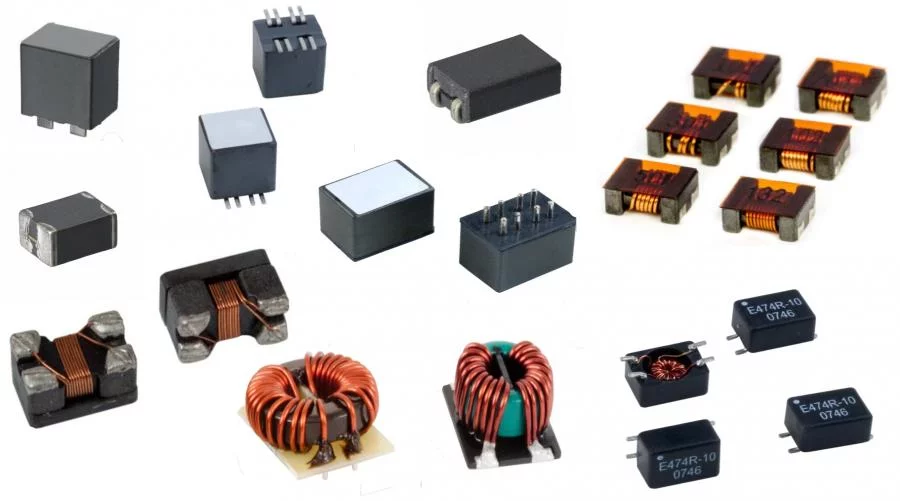
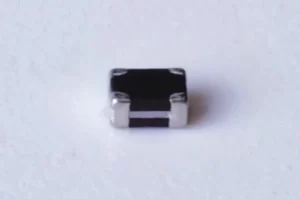
Laird chokes have excellent inductance performance even at frequencies as low as 100 kHz and below. They are built in a way where wires are wound in a circular shape called toroidal. These chokes use many pairs of cables, whether twisted together or not, which helps reduce interference and unwanted signals in wires that are usually twisted. Additionally, they can accurately handle different levels of electric current across a wide range of inductance values.

Laird chokes exhibit superior inductance performance well into the 100 kHz range and below. The internal construction of these chokes are of the wound toroidal fashion. They use a large number of cable pairs twisted or non-twisted. This configuration reduces RFI and cross talk associated with balanced wires found in most common chokes. It also exhibit accurate current matching capability over a broad range of inductance value.

Laird Multilayer type and small size common mode choke can be applied on high-speed differential signal interfaces such as HDMI, USB3.0 and DisplayPort with excellent EMI Noise suppression at wide frequency range,. By using these parts on the data lines (D+ and D-), they will suppress common mode noise without affecting the integrity of the differential signal.

Laird Multilayer type and small size common mode choke can be applied on high-speed differential signal interfaces such as HDMI, USB3.0 and DisplayPort with excellent EMI Noise suppression at wide frequency range,. By using these parts on the data lines (D+ and D-), they will suppress common mode noise without affecting the integrity of the differential signal.
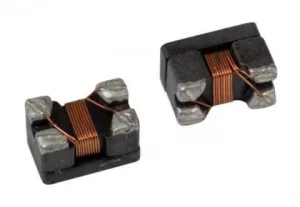
Laird Wire Wound Type Broadband common mode filter can be applied on Gbps-level high-speed differential signal interfaces (cut off frequency up to 6GHz) such as HDMI, USB3.0. By using these parts on the data lines (D+ and D-), they will suppress common mode noise without affecting the integrity of the differential signal.

Laird Wire Wound type common mode choke provide an excellent common mode filter characteristic at wide frequency range. Impedance for common mode noise can clear 600 Ohm [100MHz], and has good EMC suppression.

Laird Wire Wound type common mode choke provide an excellent common mode filter characteristic at wide frequency range. Impedance for common mode noise can clear 600 Ohm [100MHz], and has good EMC suppression.

Laird’s Can-Bus Common Mode Choke is a Wire Wound SMT construction with robust design, it allows choke to perform at –40 to +125°C temperature range and meet automotive quality requirements. High reliability and stable performance under severe and harsh operating environments.

Laird’s Can-Bus Common Mode Choke is a Wire Wound SMT construction with robust design, it allows choke to perform at –55 to +150°C temperature range and meet automotive quality requirements. High reliability and stable performance under severe and harsh operating environments.
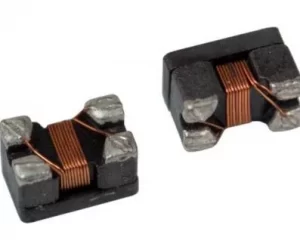
Laird’s Can-Bus Common Mode Choke is a Wire Wound SMT construction with robust design, it allows choke to perform at –55 to +150°C temperature range and meet automotive quality requirements. High reliability and stable performance under severe and harsh operating environments.

Laird chokes exhibit superior inductance performance well into the 100 kHz range and below. The internal construction of these chokes are of the wound toroidal fashion. They use a large number of cable pairs twisted or non-twisted. This configuration reduces RFI and cross talk associated with balanced wires found in most common chokes. It also exhibit accurate current matching capability over a broad range of inductance value.
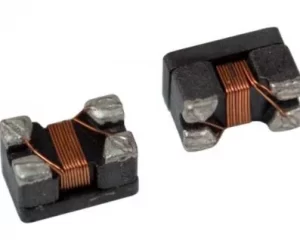
Laird’s Can-Bus Common Mode Choke is a Wire Wound SMT construction with robust design, it allows choke to perform at –40 to +125°C temperature range and meet automotive quality requirements. High reliability and stable performance under severe and harsh operating environments.
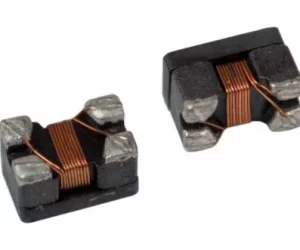
Laird’s Can-Bus Common Mode Choke is a Wire Wound SMT construction with robust design, it allows choke to perform at –55 to +150°C temperature range and meet automotive quality requirements. High reliability and stable performance under severe and harsh operating environments.
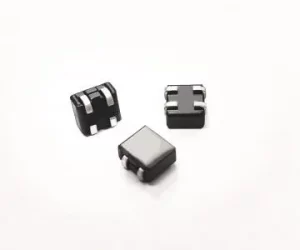
Laird’s high current CM chokes provide small form factor high performance and economical power filtering for common mode noise in applications up to 15 amps. Multi-line surface mount filters provide EMI suppression for groups of conductors like power traces and high-speed data lines. Effective filtering into the GHz range

Laird’s high current CM chokes Array provide small form factor high performance and economical power filtering for common mode noise in applications up to 10 amps. Multi-line surface mount filters provide EMI suppression for groups of conductors like power traces and high-speed data lines. Effective filtering into the GHz range
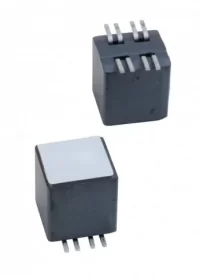
Laird’s high current CM chokes Array provide small form factor high performance and economical power filtering for common mode noise in applications up to 5 amps. Multi-line surface mount filters provide EMI suppression for groups of conductors like power traces and high-speed data lines. Effective filtering into the GHz range.
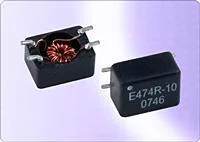
Laird chokes exhibit superior impedance performance well into the 100 kHz range and below. The internal construction of these chokes are of the wound toroidal fashion. They use a large number of cable pairs twisted or non-twisted. This configuration reduces RFI and cross talk associated with balanced wires found in most common chokes. With typical peak impedances ranging from 2 kohms to 13 kohms in the frequency ranges of 18 to 80 MHz these parts are prefect for suppressing noisy common mode signal lines.

Laird’s high current CM chokes Array provide small form factor high performance and economical power filtering for common mode noise in applications up to 8 amps. Multi-line surface mount filters provide EMI suppression for groups of conductors like power traces and high-speed data lines. Effective filtering into the GHz range

Laird chokes have excellent inductance performance even at frequencies as low as 100 kHz and below. They are built in a way where wires are wound in a circular shape called toroidal. These chokes use many pairs of cables, whether twisted together or not, which helps reduce interference and unwanted signals in wires that are usually twisted. Additionally, they can accurately handle different levels of electric current across a wide range of inductance values.

Laird chokes exhibit superior inductance performance well into the 100 kHz range and below. The internal construction of these chokes are of the wound toroidal fashion. They use a large number of cable pairs twisted or non-twisted. This configuration reduces RFI and cross talk associated with balanced wires found in most common chokes. It also exhibit accurate current matching capability over a broad range of inductance value.

Laird Multilayer type and small size common mode choke can be applied on high-speed differential signal interfaces such as HDMI, USB3.0 and DisplayPort with excellent EMI Noise suppression at wide frequency range,. By using these parts on the data lines (D+ and D-), they will suppress common mode noise without affecting the integrity of the differential signal.

Laird Multilayer type and small size common mode choke can be applied on high-speed differential signal interfaces such as HDMI, USB3.0 and DisplayPort with excellent EMI Noise suppression at wide frequency range,. By using these parts on the data lines (D+ and D-), they will suppress common mode noise without affecting the integrity of the differential signal.

Laird Wire Wound Type Broadband common mode filter can be applied on Gbps-level high-speed differential signal interfaces (cut off frequency up to 6GHz) such as HDMI, USB3.0. By using these parts on the data lines (D+ and D-), they will suppress common mode noise without affecting the integrity of the differential signal.

Laird Wire Wound type common mode choke provide an excellent common mode filter characteristic at wide frequency range. Impedance for common mode noise can clear 600 Ohm [100MHz], and has good EMC suppression.

Laird Wire Wound type common mode choke provide an excellent common mode filter characteristic at wide frequency range. Impedance for common mode noise can clear 600 Ohm [100MHz], and has good EMC suppression.

Laird’s Can-Bus Common Mode Choke is a Wire Wound SMT construction with robust design, it allows choke to perform at –40 to +125°C temperature range and meet automotive quality requirements. High reliability and stable performance under severe and harsh operating environments.

Laird’s Can-Bus Common Mode Choke is a Wire Wound SMT construction with robust design, it allows choke to perform at –55 to +150°C temperature range and meet automotive quality requirements. High reliability and stable performance under severe and harsh operating environments.

Laird chokes have excellent inductance performance even at frequencies as low as 100 kHz and below. They are built in a way where wires are wound in a circular shape called toroidal. These chokes use many pairs of cables, whether twisted together or not, which helps reduce interference and unwanted signals in wires that are usually twisted. Additionally, they can accurately handle different levels of electric current across a wide range of inductance values.

Laird chokes exhibit superior inductance performance well into the 100 kHz range and below. The internal construction of these chokes are of the wound toroidal fashion. They use a large number of cable pairs twisted or non-twisted. This configuration reduces RFI and cross talk associated with balanced wires found in most common chokes. It also exhibit accurate current matching capability over a broad range of inductance value.

Laird Multilayer type and small size common mode choke can be applied on high-speed differential signal interfaces such as HDMI, USB3.0 and DisplayPort with excellent EMI Noise suppression at wide frequency range,. By using these parts on the data lines (D+ and D-), they will suppress common mode noise without affecting the integrity of the differential signal.

Laird Multilayer type and small size common mode choke can be applied on high-speed differential signal interfaces such as HDMI, USB3.0 and DisplayPort with excellent EMI Noise suppression at wide frequency range,. By using these parts on the data lines (D+ and D-), they will suppress common mode noise without affecting the integrity of the differential signal.

Laird Wire Wound Type Broadband common mode filter can be applied on Gbps-level high-speed differential signal interfaces (cut off frequency up to 6GHz) such as HDMI, USB3.0. By using these parts on the data lines (D+ and D-), they will suppress common mode noise without affecting the integrity of the differential signal.

Laird Wire Wound type common mode choke provide an excellent common mode filter characteristic at wide frequency range. Impedance for common mode noise can clear 600 Ohm [100MHz], and has good EMC suppression.

Laird Wire Wound type common mode choke provide an excellent common mode filter characteristic at wide frequency range. Impedance for common mode noise can clear 600 Ohm [100MHz], and has good EMC suppression.

Laird’s Can-Bus Common Mode Choke is a Wire Wound SMT construction with robust design, it allows choke to perform at –40 to +125°C temperature range and meet automotive quality requirements. High reliability and stable performance under severe and harsh operating environments.

Laird’s Can-Bus Common Mode Choke is a Wire Wound SMT construction with robust design, it allows choke to perform at –55 to +150°C temperature range and meet automotive quality requirements. High reliability and stable performance under severe and harsh operating environments.
Ferrite Beads on Wire
High-powered Energy Management
If managed improperly while they are active, cords and cables on consumer electronics create radio energy, causing noise which disturbs and interferes with other nearby electronic devices. Laird Steward’s small, cylindrical ferrite beads positioned on wire enable you to block the emission of radio waves from the cords and cables, thus maximizing power efficiency. The ultra-thin, lightweight designs consist of a layered inductor structure that isolates and converts the energy into heat, creating impedance over a broad frequency range while maintaining a low-cost, streamlined system that won’t compromise your overall design or impair other surface mount devices.
Benefits of Our Ferrite Beads on Wire
Constructed from ultra-thin mixtures of iron, nickel and zinc oxides, our ferrites are characterized by their size, light weight, low cost, and high reliability. They provide superb EMI reduction while remaining open to normal circuit operation. Other benefits include:
- Differential Mode EMI Filters
- Lead-free and RoHS compliant
- High current capability
- Through-hole application
- Wire leads through ferrite
- Low DCR
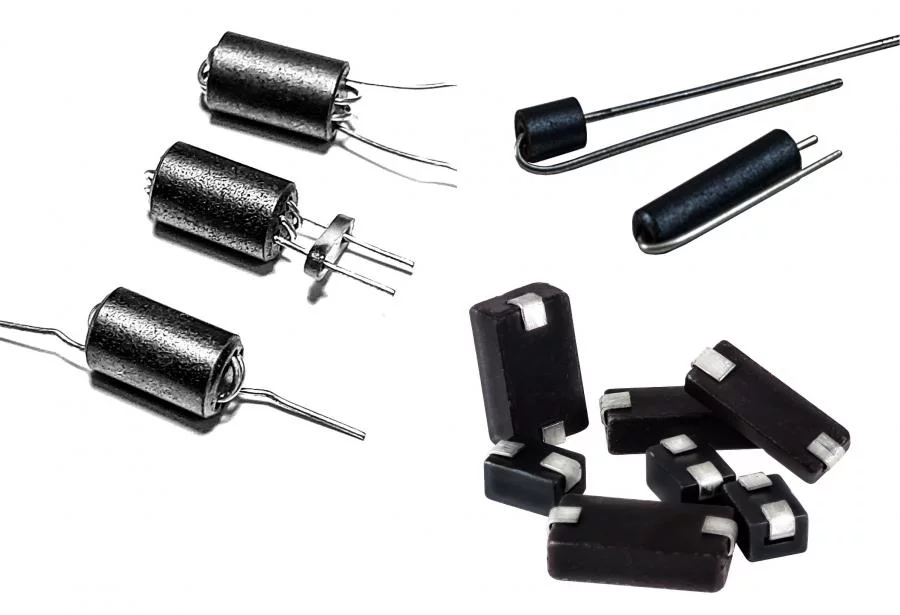
Ferrite Cable Cores
What are Ferrite Cores?
In the transmission system, noise is classified in two ways: one is differential mode noise and the other is common mode noise. A common mode signal (noise) is an unwanted signal as it “carries” no information. A ferrite cable core is designed to clean common mode noise (signal) generated from either a signal line or power cable.
How do Ferrite Cores Work?
Ferrite cores are used to suppress electromagnetic emissions by blocking low-frequency noise and absorbing high-frequency noise. This avoids electromagnetic interference.
How to Choose the Right Ferrite Cable Core
Firstly, confirm the “problem frequency” and then the available space. The next step is to select an appropriate ferrite core (refer ID , OD and length of this ferrite core) with as higher an impedance as possible which can cover the problem frequency.
Benefits of Laird Performance Materials’ Ferrite Cores
Why Steward and Laird? Our companies have combined to set performance standards worldwide. Laird Steward follows in the footsteps of Steward, well known by the biggest and brightest technology teams designing, manufacturing and delivering high quality, high performance EMI protection solutions.
What’s more, our SPICE model is an industry first. SPICE is a powerful tool predicting with superior accuracy the real performance of a ferrite bead in operation. SPICE solves problems faster, allowing Steward products to lower design time and cost.
- Multiple sizes, materials, and customization available
- Three different materials to select from: Low frequency (LF), High frequency (HF), and Broadband
- Lowest cost supplier of Ohms of impedance
- Excellent differential and common mode EMI suppression on flat cable assemblies
- Can be used as a transformer or inductor
- Available in cylinder, ribbon, split flat, and clamp-on shape
- Provides tight tolerance control and EMI suppression
- Can help fix issues during the design stage
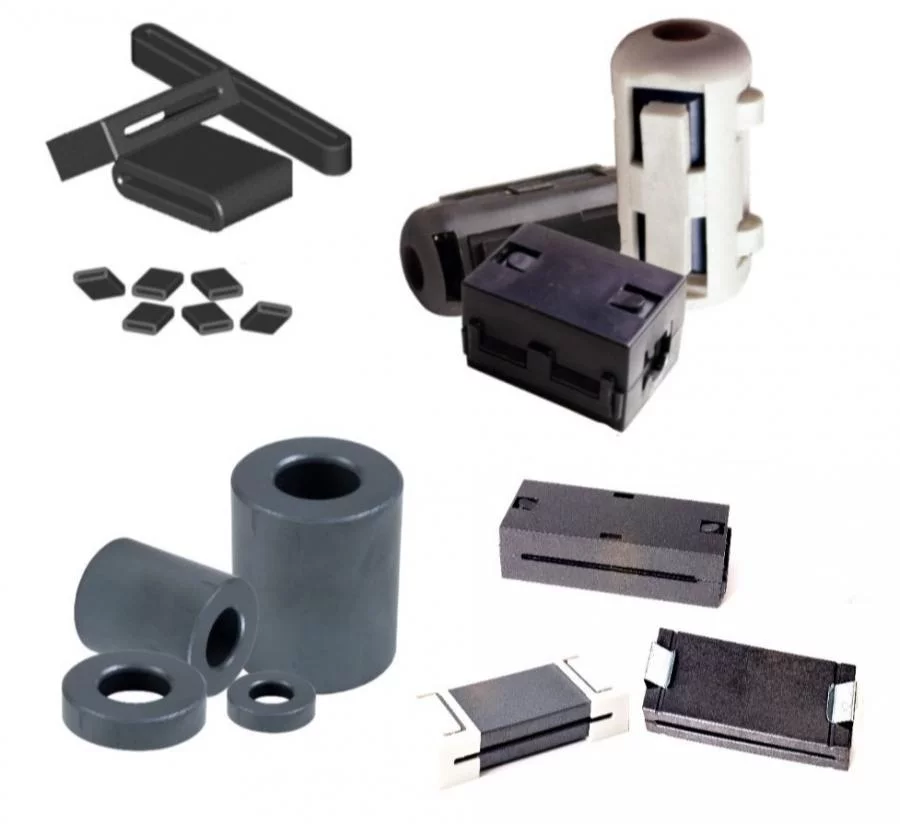
Ferrite Chip Beads
What are Ferrite Chip Beads?
In the transmission system, noise is classified in two ways: one is differential mode noise and the other is common mode noise. Ferrite beads are used to clean differential mode noise generated from either the signal line or power line circuit.
How do Ferrite Chip Beads Work?
Chip beads are used to absorb high-frequency noise and transform it into heat, to filter out the unwanted signal (noise).
Wire Wound vs. Multilayer
Laird Inductive components offer both Wire Wound and Multilayer type Ferrite chip beads. In addition, high retention Multilayer type chip beads demonstrate excellent performance under power loads, and wire wound types will be a superior option, covering wide bandwidth frequency problems.
Benefits of Laird Performance Materials’ Ferrite Chip Beads
Constructed from ultra-thin mixtures of iron, nickel and zinc oxides, our ferrites are characterized by their size, light weight, low cost, and high reliability. They provide superb EMI reduction while remaining open to normal circuit operation.
Other benefits include:
- Ideal for power lines, general signal lines, and high-speed signal lines
- SPICE Models available
- Datasheets include impedance versus DC bias for predicting real performance even at very low current levels
- Broadband, low frequency, and high frequency available
- Available in multiple sizes and materials
- Economical
- Reliable, multilayer monolithic construction for continuous protection
- Up to 10A (I MAX) continuous operation capability
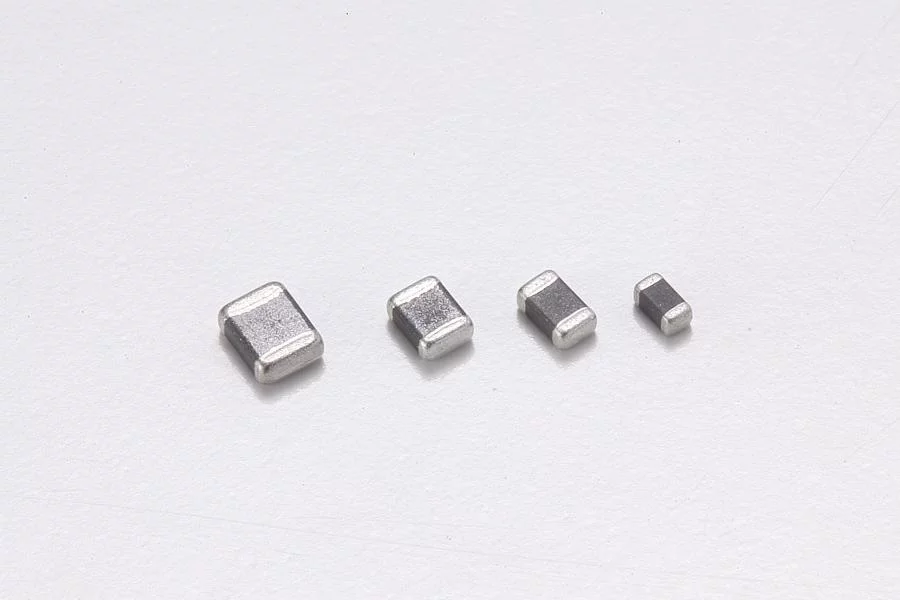
Ferrite Differential Arrays
Strong Protection, Rugged Design
Noise can seriously degrade the reception and transmission of signals in critical communication systems. This leads to a lack of reliability and imperfect protection from unforeseen events. Our line of ferrite differential arrays provides an economical solution to EMI filtering of differential mode noise in surface mount and through-hole printed circuit boards applications. Designed to provide high frequency suppression of both common and differential mode EMI noise on groups of data and power lines, Laird Steward’s unique, rugged construction provides superior protection against transient occurrences. What’s more, they can withstand a much higher peak current than any other EMI suppression devices on the market.
Benefits of Our Differential Arrays
Constructed from ultra-thin mixtures of iron, nickel and zinc oxides, our ferrites are characterized by their size, light weight, low cost, and high reliability. They provide superb EMI reduction while remaining open to normal circuit operation. Other benefits include:
- Capable of up to 10 amps continuous operation
- Through-Hole (T) and surface mount (R) available
- Lead-free and RoHS compliant
- 3, 4, 5 & 8-line configurations enable installation flexibility

Ferrite Plates and Disks
Block EMI at its Source
Most consumer electronics run on flexible printed circuit boards which are designed to the exact specifications needed to meet their intended purpose. Computers and microwaves couldn’t function without properly working PCBs. Wherever EMI and active antennas disrupt the circuit board after the soldering process, Laird Steward ferrite disks and plates provide a simple, cost-effective solution. They can be utilized either as inductively coupled components or, as EMI shields on PCBs. The inductive coupling occurs when the ferrite affects the conducted wave form leaving the active component. The rise time of the wave form is effectively slowed by the ferrite. The overshoot and associated ringing are attenuated. On PCBs, they can be placed directly on the EMI source, absorbing the radiated emissions at its core. This can help streamline your design and reduce overall material cost. Simple solution. Maximum efficiency.
Benefits of our Ferrite Disks and Plates
Constructed from ultra-thin mixtures of iron, nickel and zinc oxides, our ferrites are characterized by their size, light weight, low cost, and high reliability. They provide superb EMI reduction while remaining open to normal circuit operation. Other benefits include:
- Can be used to locate unwanted EMI antennas
- Flat Flex and ribbon cables
- Each part for volume production is provided with permanent, double sided 3.5 mil acrylic adhesive with 218 oz. adhesion
- Provides retrofit auxiliary EMI attenuation
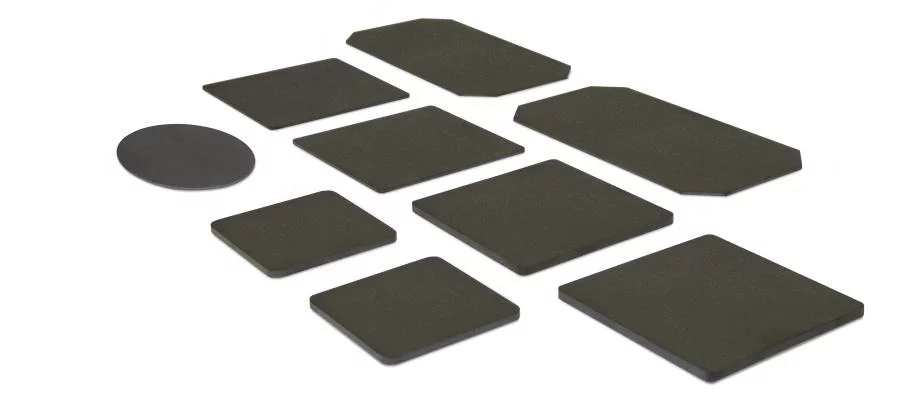
Ferrite Rods
- Standard 28 material optimized for superior EMI suppression
- Precise dimension control and automotive grade available
- -40°C to +85°C operating temperature
- Available in wide range of sizes, custom materials or shapes are also available upon request
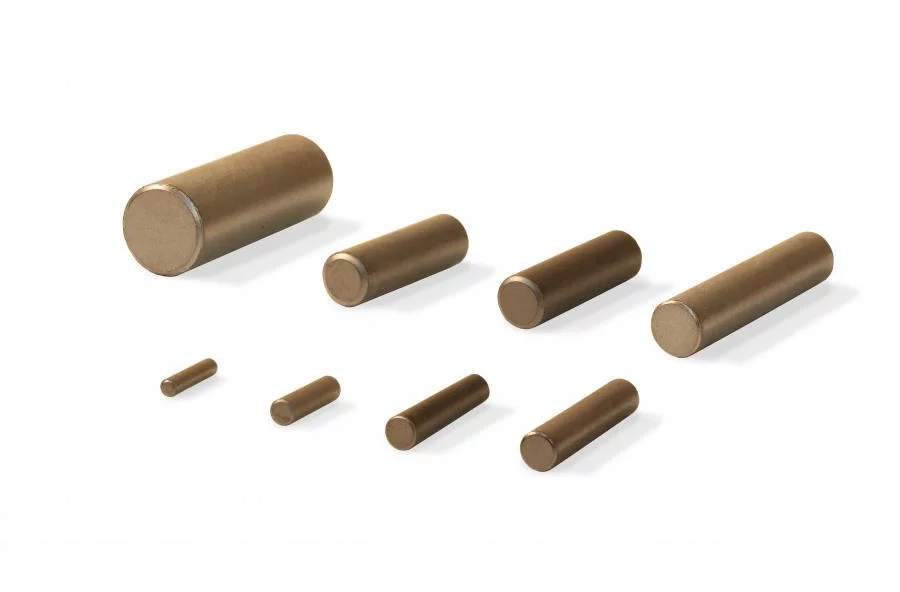
Ferrite Sheets
Laird Steward ferrite sheets are composed of NiZn to provide high-volume resistance over a broad frequency range. Our ferrite sheets suppress EMI while offering an innovative approach to improving operating performance. Correctly managing magnetic flux improves the overall energy and data transfer in NFC, RFID, and wireless power systems enabling you to concur a more efficient communication range.
Benefits of our Ferrite Sheets
- RoHS Complaint
- Standard ferrite layer thickness 0.05 mm. 0.1 mm and 0.2 mm
- Operating temperature range: –40 to +85°C
- Custom size or thickness available upon request
- Made by thin, high permeability sintered ferrite with PET film and adhesive tape

Ferrite Toroids and Balun Cores
Small Parts, Superior Performance
The excess energy created by circuits inside your consumer electronics or communication system can lead to significant EMI infiltration. Laird Steward’s ferrite toroids are designed to filter this interference efficiently and as unobtrusively as possible. The cylindrical shape and magnetic power of our unique ferrite material work together to uniformly distribute the excess energy so you can properly manage the voltage of a current and separate signals of different frequencies. This keeps your product running smoothly and optimized for best performance.
Benefits of our Ferrite Toroids
Constructed from ultra-thin mixtures of iron, nickel and zinc oxides, Laird Steward ferrite toroids are characterized by their impressively small, lightweight size that provide superb EMI reduction while remaining open to normal circuit operation. We offer a variety of sizes and shapes that can be custom designed to fit your specific application needs. Other benefits include:
- Superior size and weight for optimization of applications and frequency levels
- No coupling with adjacent components
- Resistive core coatings of Parylene and Epoxy at a 0.0005mm thickness but others available upon request
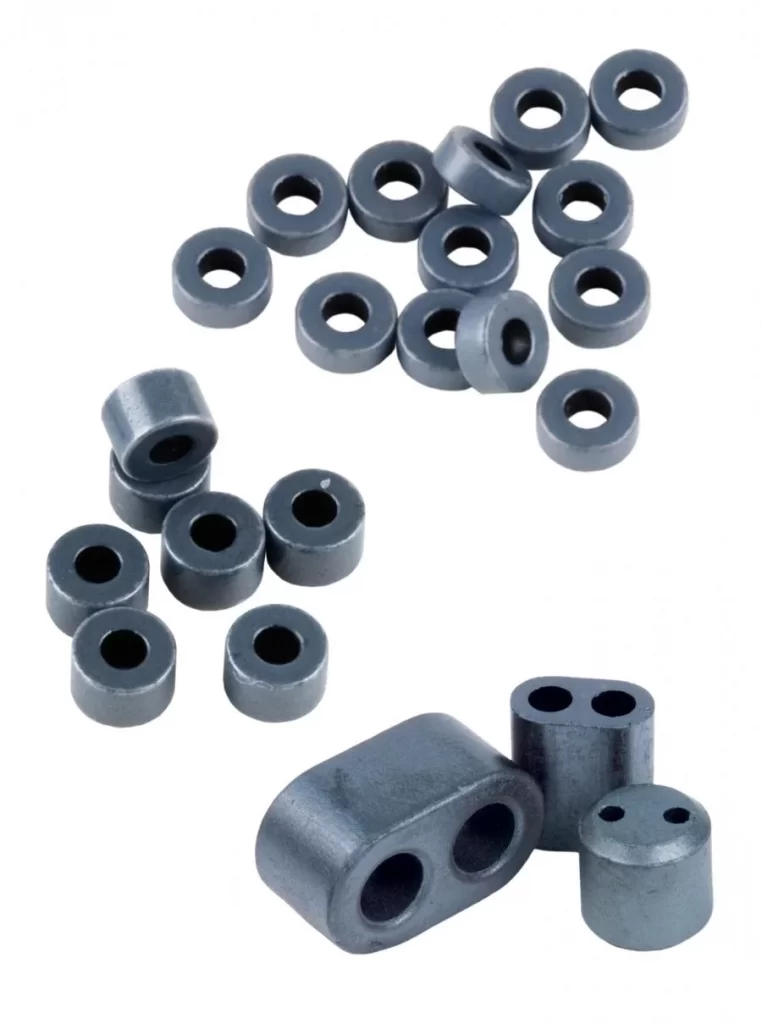
Wire-Wound Surface Mount Inductors
Designed for high current applications like personal computers and telecom devices, our molded inductors perform where other conventional inductors can sometimes fail. Laird Steward molded inductors are robust structures, consisting of a pressed core material that blocks air and noise intrusion altogether and enhances its magnetic performance. They achieve greater inductance and current with less overall volume for unobtrusive placement within tiny devices. Inductance remains stable across a wide current range and drops softly above rated currents, creating power optimization and reliability.
Benefits of Our Molded Inductors
Constructed from ultra-thin mixtures of nickel zinc ferrite, manganese, powder iron, and metal alloy, our molded inductors are characterized by their monolithic construction, small size, light weight, and low cost. Other benefits include:
- Low profile / miniature size
- High DC bias and saturation current
- Less self-induced electromagnetic interference
- High reliability, achieving AEC-Q200 standard
- Frequency range up to 5 MHZ

Multilayer Power Inductors
Small footprint, monolithic construction, for DC-DC converters, power modules and compact electrical devices.
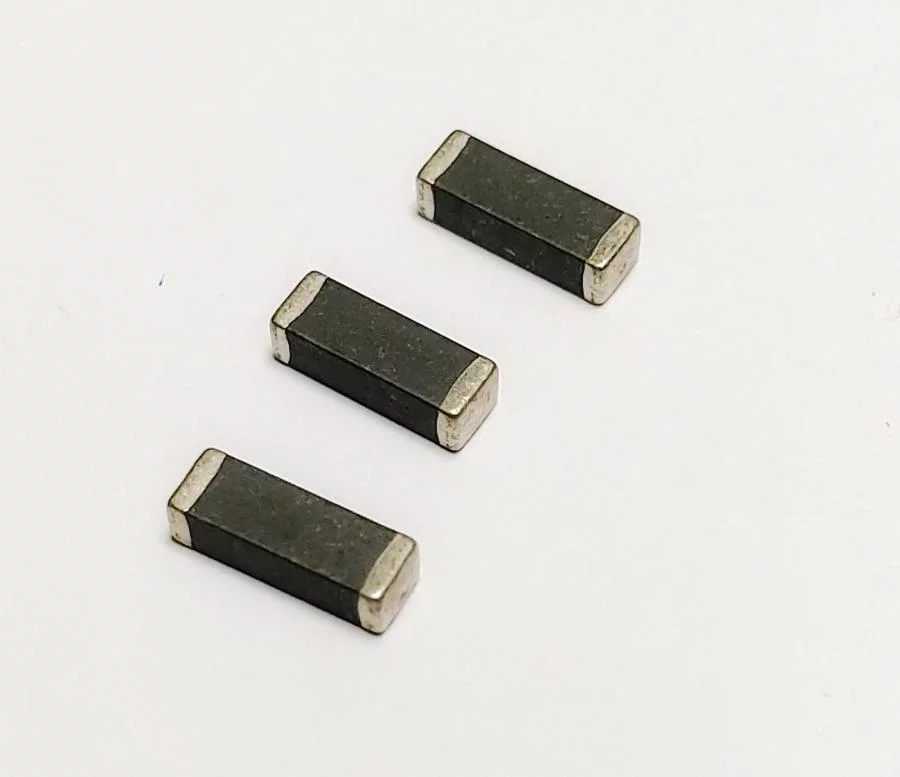
Multilayer Power Inductors for General Circuit
Small footprint, monolithic construction, for stable, low-loss inductance over broad frequencies.
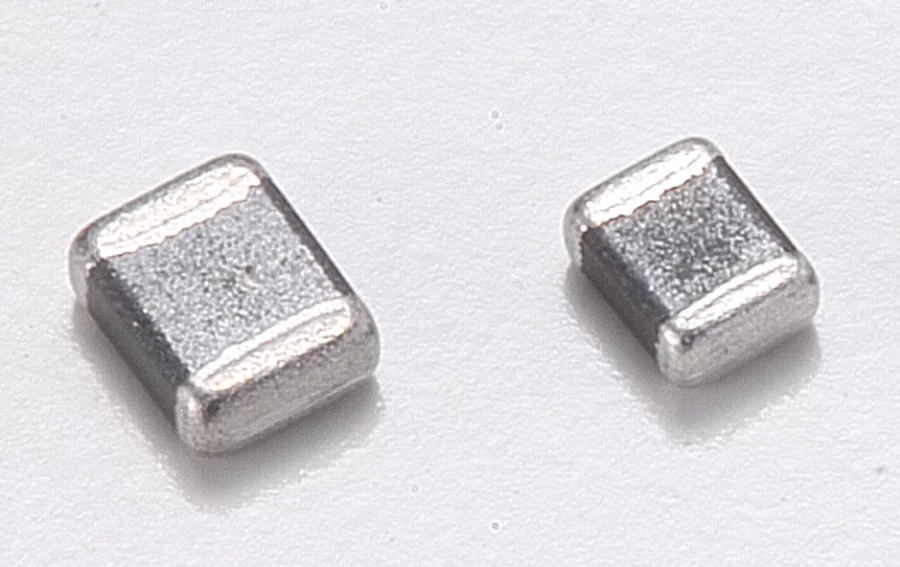
Wire-Wound Surface Mount Ceramic Chip Inductor
Laird IWC series SMD wire wound ceramic chip inductors improve electronic performance and reliability. A low profile and compact design benefits Telecom, Industrial and General Consumer Electronic designs, particularly for antenna, wireless communication and multimedia applications.
Features
- Surface mount
- High resonance frequency
- Narrow inductance tolerance
- Suitable for lead-free reflow soldering and RoHS compliant
- Wide range of size and inductance selection
Benefits
- Easy to install; reduce assembly failures
- Enables more compact electronic designs
- Enhances high frequency circuit performance
- Optimized for applications at extended temperature (-40C to 125C)
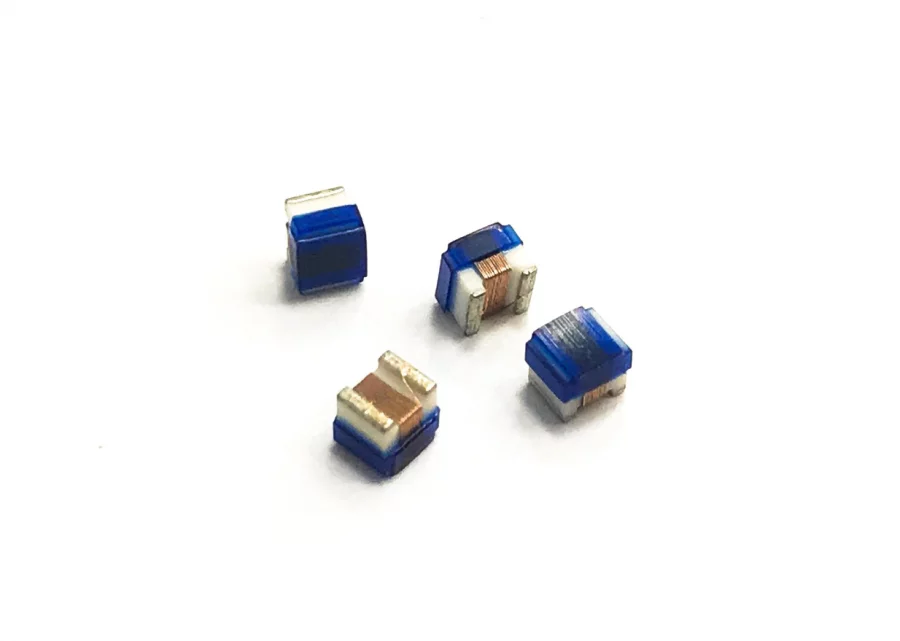
Wire-Wound Surface Mount Inductors
Small size, large current solution for -40 C to 125 C applications, magnetic shielding, wire wound construction.
Also checkout Laird’s Inductors for Power and Signal lines.
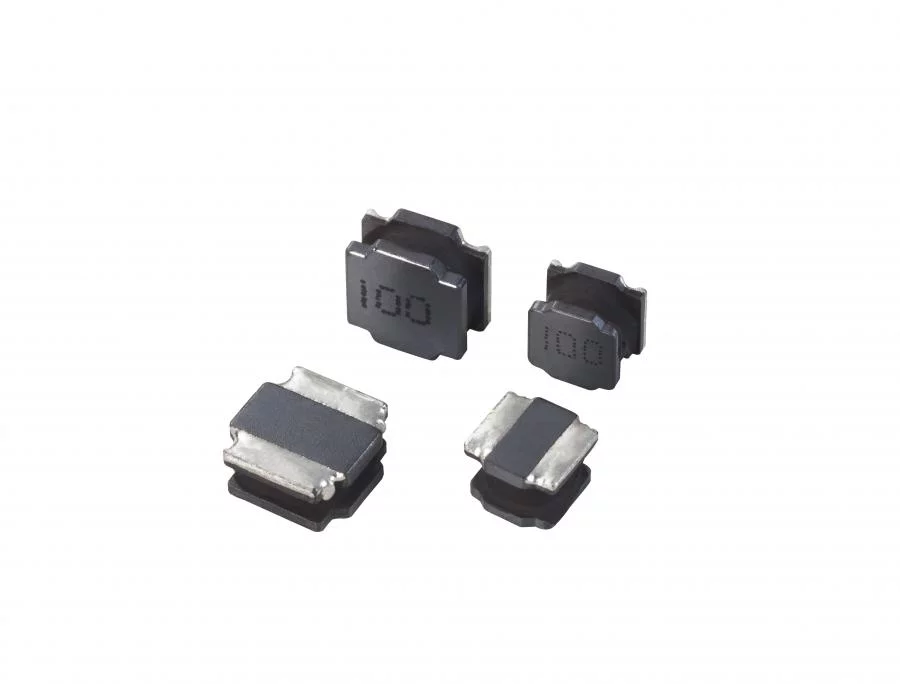
Coil Modules
Ultra Thin, Optimized Charging
Wireless charging technology can be inefficient due to poor communication between devices or an overload of energy compromising the device’s internal battery over time. Our engineers understand this constant struggle and have developed extremely effective, reliable wireless charging coil modules using carefully selected ferrite materials.
Their high Q Factor creates maximum wireless power charging efficiency while minimizing EMI. They use wireless power consortium (WPC) ferrite material and the coil module design is WPC Qi specification compliant. The power transmitter design provides up to 15 W, and even higher power designs are available upon request.
Beyond the standard coil modules, Laird Steward offers custom parts and designs for specialist applications.
Benefits of our Coil Modules
- Laird Steward wireless charging modules are automotive standard AECQ-200 (reliability specification) approved.
- Designed to meet WPC Qi standard
- Operating temperature: -40°C to +125°C
- Assembled with ferrite plate which is built with WPC-listed ferrite material
- High Q for maximum power transmission
- Easy to assemble
- Available in solid or flexible ferrite
Applications
- Medical devices
- Battery packs with wireless charging functionality
- Smart kitchens (home appliances)
- Charging needs for office, residential, or public areas
- Charging needs for power tools or any other devices that need contactless power
- Charging for general electronic devices or aftermarket accessories

Ferrite Plates
Delivers on Contact
Laird Steward ferrite plates are engineered performance materials that provide a simple, cost-effective solution for radiated and inductively coupled electromagnetic interference. After the PC board soldering process, a ferrite disk or plate can be installed directly on the source of stray EMI (such as active devices or unwanted antennas).
Our engineers understand your issues and have developed an extremely effective and reliable ferrite plate that improves wireless charging performance. Our plates are created to secure a strong connection. They also make possible combination designs (with magnetic coupling and resonant wireless charging) and act as an effective shielding material to concentrate and direct magnetic flux between the transmitter and receiver devices. This removes disruption from being an issue and optimizes charging efficiency. Wireless charging is now perfected.
Benefits of Our Ferrite Plates
- Characterized by their size, light weight, low cost, and high reliability. Easy installation
- Different ferrite material options available
- Custom parts also available
Designed and optimized for resonant charging, our ferrite plats also can support both magnetic coupling and resonant wireless charging concurrently.
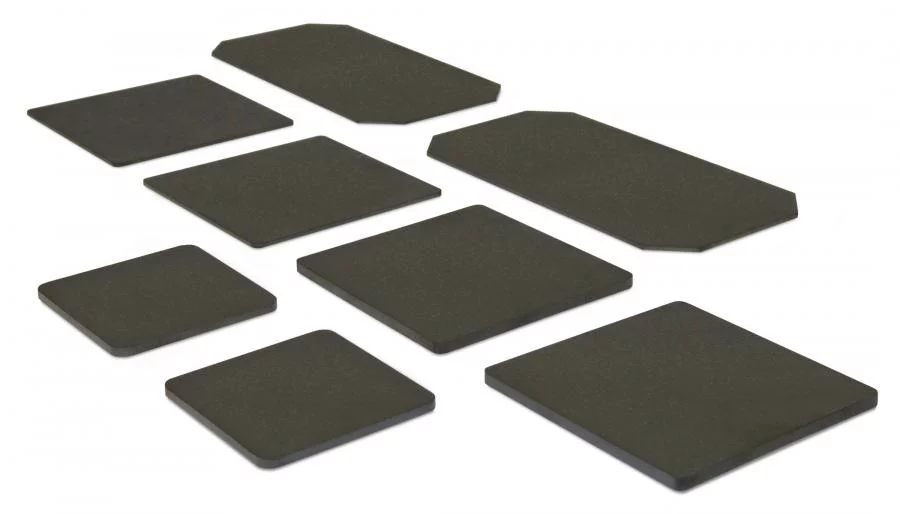
Ferrite Sheets
Soft Materials, Flexible Functionality
Sometimes your design requires flexibility – you can’t be held down by mechanical restraints. Composed of NiZn to provide high-volume resistance over a broad frequency range, our ferrite sheets suppress EMI while being an innovative approach to operating performance. Correctly managing magnetic flux improves the overall energy and data transfer in NFC, RFID, and wireless power systems, so you can concur a more efficient communication range. In today’s modern electronic product market, size and weight are important factors to consider when designing a product. Laird Steward ferrite sheets will provide you with the strength and flexibility you need to make powerful, cost-effective, and unquestionably sleek products.
Benefits of Our Ferrite Sheets
Constructed from ultra-thin mixtures of iron, nickel and zinc oxides, our ferrites are characterized by their size, light weight, low cost, and high reliability. They provide superb EMI reduction while remaining open to normal circuit operation. Other benefits include:
- Flexible sheets for 13.56 MHz NFC, RFID application & wireless charging application
- Made with thin, high-permeability sintered ferrite with PET film and adhesive tape
- Standard ferrite layer thickness 0.05mm, 0.1mm and 0.2mm
- Custom size or thickness available upon request
- Operating temperature -40°C to 85°C or 120°C
- RoHS compliant



